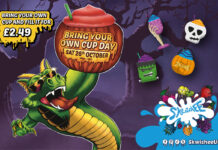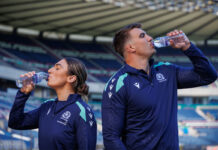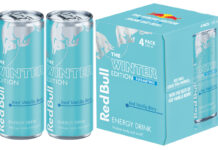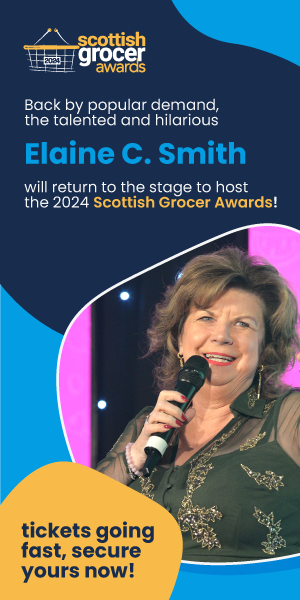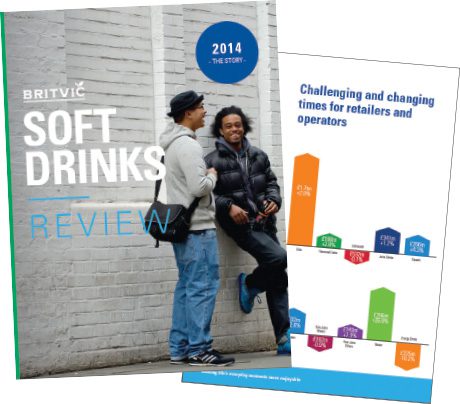
Sales growth in small shops well ahead of supermarkets but multiple c-stores soar as independents show flat sales
SOFT Drinks sales are holding up in a difficult overall retail market and impulse and convenience stores showed some of the best soft drinks performances in 2014.
Those were some of the messages in the latest of the long-running series of the Britvic Soft Drinks Review, published a few weeks ago.
Soft drinks had, according to the review, shown resilience compared to other fast-moving consumer goods (FMCG) categories. While other consumable products, such as tea and instant coffee, had shown drops in value of 2.2% and 3.5% respectively in 2014, soft drinks, across total retail, registered an increase in value sales of 0.4% to reach a total value of £7.6bn.
And the growth was achieved predominantly in convenience outlets. For while volume sales in 2014 dropped very slightly compared to 2013 in multiple grocers and value sales were down 0.4% the story was different in impulse stores, where volume sales of soft drinks were up 2.6% and sales value grew 2.8%. However the Britvic review’s figures, drawn from Nielsen Scantrack research, suggested the impulse sales growth had all occurred in multiple convenience outlets and that sales value in independent shops actually slipped by 0.1% in 2014.
Britvic said the soft drinks market had been boosted by major sporting events in 2014, which included the football World Cup, the Glasgow Commonwealth Games and the Gleneagles Ryder Cup.
But it also said there had been a switch of consumer allegiance back to branded goods, there had been growing demand for healthy products, and that soft drinks manufacturers’ product innovations had helped maintain consumer interest.
Cola retained its position as the single-most valuable segment of retail soft drinks with sales totalling more than £1.6bn. However cola isn’t the most valuable type of soft drink in impulse outlets. Once again that position was taken by what the report calls glucose stimulant drinks (in other words energy drinks). Energy drinks put around £533m thought the tills of Britain’s small stores, which was almost 4% up on the year before. Cola added only 0.4% and now, with impulse outlet sales of £489m, it’s considerably behind energy drinks.
However growth in energy drinks sales in the multiple grocers was even greater. In supermarkets glucose stimulant drinks increased sales value by 5.6% to reach £435.4m.
For Britvic that raised the possibility that more people than before are buying energy drinks as a cupboard staple, to be used when they need a boost.
Highest growth among soft drinks segments came, for the fifth year running, from iced tea and coffee with value sales rising by 30.7% to £68m overall and by 31.1% in impulse to reach £18.2m.
But some much bigger segments also did well in small shops in 2014.
The value of juice drinks through impulse outlets was up 7.9% to just under £197m. Bottled water in small stores was up 10.4% to almost £202m. Water Plus drinks were up by almost 11% in impulse to reach £65.5m. And smoothies saw impulse outlet sales growth of 11.5% to reach £15.6m.
But, while juice drinks did well, pure juice didn’t have a good year in convenience outlets. Sales value dropped by almost 7% to £72.3m. But even that was better than the juice performance in the multiples, where sales value fell by almost 11%.
Britvic reckons the fact that the convenience channel experienced stronger value growth than the grocery multiples showed that consumers are continuing to purchase soft drinks as part of top-up shopping trips or for on-the-go consumption.
Drinks and packs that the company calls ‘immediate soft drinks’ continued to grow. Soft drinks in cans, in 500ml or 600ml PET bottles and in cartons showed 5.9% value sales growth and 5.8% volume sales growth in 2014.
The soft drinks firm suggests that’s a trend which will intensify as consumers increasingly look for refreshment at every part of the day.
“2014 was the year when the grocery and convenience channel held steady and showed its true resilience in the face of shifting consumer purchasing patterns and wider environmental challenges,” said Britvic GB managing director Paul Graham.
“Shaped by multiple consumer trends – such as the increasing focus on the wider health agenda, marketing and legislation, the rise of on-the-go consumption, and the demand for added value out of every experience – the soft drinks manufacturers who have been the most successful have adapted their immediate consumption formats and incorporated flavour enhancements, as well as reformatting to provide low or no-calorie variants.
“Although these are challenging and changing times, there are significant growth opportunities for soft drinks in the grocery and convenience channel in 2015 and beyond,” he said.



